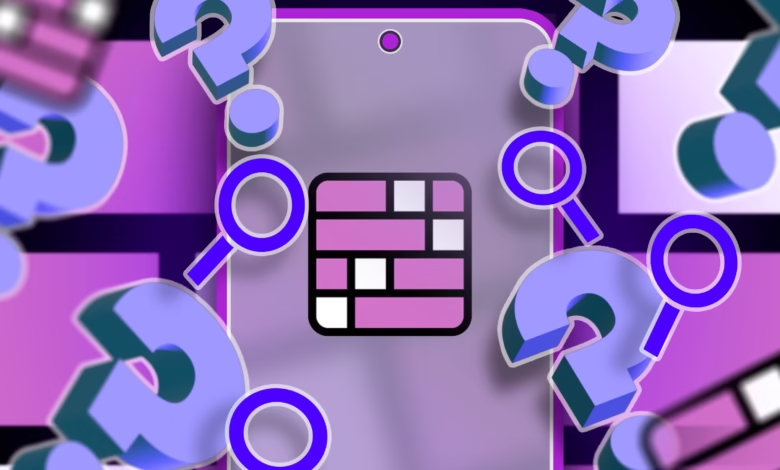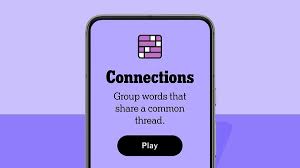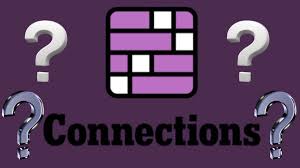NYT Connections Hints: Mastering the Puzzle Game with Ease

The New York Times (NYT) Connections puzzle is a daily brain teaser that has quickly gained a large following. The game offers an engaging challenge that tests players’ pattern recognition, logical thinking, and vocabulary. NYT Connections Hints For puzzle enthusiasts, the Connections game has become a daily ritual, offering a unique blend of fun and mental stimulation. In this article, we will explore useful hints and strategies to help you master NYT Connections and become a pro at solving it.
What Is NYT Connections?

NYT Connections is a word-based puzzle game where players are given 16 words and must group them into four distinct categories of four words each. The challenge lies in identifying the relationships between the words, which may be based on a variety of themes such as types of animals, geography, color, or even abstract connections like historical events.
Each puzzle has a specific set of words, and the goal is to categorize them correctly before time runs out. Players need to think critically about the words’ meanings, their associations with each other, and any possible connections based on the rules of the game.
How To Play NYT Connections?
Before diving into the hints and tips, let’s briefly review how the game works. Each day, you are given 16 words. Your task is to sort them into 4 groups of 4 words each. The categories can be anything from color names to scientific terms or famous personalities. There’s no limit to the types of connections that can be made, and that’s what makes the game so tricky.
Key Features:
- 16 Words: Each puzzle presents a grid of 16 words.
- 4 Categories: Your task is to divide the 16 words into 4 groups of 4 words that share a common theme.
- Hints and Errors: If you guess a word grouping incorrectly, the game provides feedback, helping you learn and refine your approach.
NYT Connections Hints: General Tips and Strategies

- Start With Obvious Categories One of the best approaches when tackling NYT Connections is to identify the most obvious groupings first. Some words might immediately stand out based on their meanings or common associations. For example, you might come across a set of words like “Tiger,” “Lion,” “Cheetah,” and “Leopard” – these are all big cats and can be easily grouped together.Look for groups that are immediately clear to you. This strategy not only helps you eliminate some words early on but also gives you a foundation to work from as you tackle the more challenging connections.
- Use Process of Elimination If you’re unsure about the connections, it’s helpful to use a process of elimination. Try grouping words into categories and check them. If you make an incorrect grouping, the game will inform you with feedback, and you can narrow down the possibilities based on that feedback.For example, you might end up with a group that doesn’t fit into any of your expected categories. Use that as a clue that one of your other groupings is wrong and revisit it.
- Think About Categories That Involve Multiple Associations Sometimes, words may fit into multiple categories based on different associations. For example, “Mercury” can be a planet, a chemical element, and even a Roman god. Try thinking in multiple dimensions and consider various associations—scientific, historical, geographical, etc.
- Use Word Synonyms and Categories Synonyms can be particularly helpful in identifying word groupings. For instance, if you see the words “King,” “Queen,” “Prince,” and “Princess,” it’s easy to group them into royalty. However, synonyms extend beyond obvious royal connections. Words like “Runner” and “Marathon” can be grouped under sports, especially when considering different types of athletes.
- Look for Hidden Themes The connections between words in NYT Connections can often be abstract. Sometimes words are grouped by more obscure or hidden themes, such as months of the year, types of music genres, or famous writers. You’ll have to think more creatively in these cases.
- Take Notes if Necessary If you’re struggling to see the connections, it can be useful to jot down the words and try to come up with potential connections in a more organized way. Some players find it helpful to use a piece of paper to physically write down groupings as they brainstorm.
- Use Feedback to Refine Your Groupings The game provides valuable feedback after each attempt, which can help refine your approach. If one of your groupings is incorrect, pay attention to the feedback and see which words may have been misgrouped. This feedback can help guide you toward the right connections.
- Practice Daily to Improve Your Skills Like any puzzle game, the more you play NYT Connections, the better you’ll get at spotting patterns and making connections. Regular practice helps you become familiar with common themes, word pairings, and types of connections.
- Use Online Resources (If Needed) If you find yourself consistently stuck, there are plenty of online resources and community forums where players share tips and tricks. These resources often provide hints for specific puzzles, which can help you learn new strategies.
Common Categories in NYT Connections

While every puzzle is unique, some categories appear more frequently than others. Here’s a look at some common groupings you might encounter:
1. Colors
- Words: Red, Blue, Yellow, Green
- Common Theme: Primary colors or secondary colors.
2. Famous People
- Words: Einstein, Tesla, Curie, Newton
- Common Theme: Famous scientists.
3. Geography
- Words: Africa, Asia, Europe, America
- Common Theme: Continents.
4. Animals
- Words: Elephant, Tiger, Lion, Zebra
- Common Theme: Wild animals in Africa.
5. Genres
- Words: Rock, Jazz, Pop, Classical
- Common Theme: Music genres.
6. Countries and Cities
- Words: Paris, London, Rome, Berlin
- Common Theme: European cities.
Avoiding Common Pitfalls in NYT Connections
While solving the NYT Connections puzzle, players often encounter specific challenges. Here are some common pitfalls and how to avoid them:
- Overthinking Trying to find a connection that is too complex can sometimes be counterproductive. Stick with simpler connections that feel more obvious to avoid confusion.
- Focusing Too Much on One Category While some categories are more difficult than others, it’s important to not get too hung up on one set of words. If you can’t figure out a category, move on to another group and come back to it later.
- Missing Out on Abstract Connections Sometimes the connections between words are less direct and require you to think outside the box. Be open to abstract or less obvious groupings that may come to mind.
The Benefits of Playing NYT Connections
Beyond just being an enjoyable puzzle game, NYT Connections offers several cognitive benefits that make it a great exercise for your brain:
- Improves Memory: Regularly playing puzzle games like NYT Connections enhances your ability to retain information and recall associations.
- Boosts Creativity: The game challenges you to think creatively, helping to improve problem-solving skills and creative thinking.
- Enhances Vocabulary: Through word association and categorization, you’ll likely encounter new words that can help expand your vocabulary.
Conclusion
Mastering NYT Connections is a matter of combining strategic thinking with practice. By starting with obvious connections, using feedback to refine your guesses, and thinking outside the box for more abstract themes, you’ll improve your ability to solve puzzles more efficiently. Remember, regular practice is key to enhancing your skills, and as you get more comfortable with the game, you’ll find that you can solve even the trickiest puzzles. Keep playing, stay curious, and enjoy the satisfying feeling of cracking the daily puzzle!
4o mini
O
